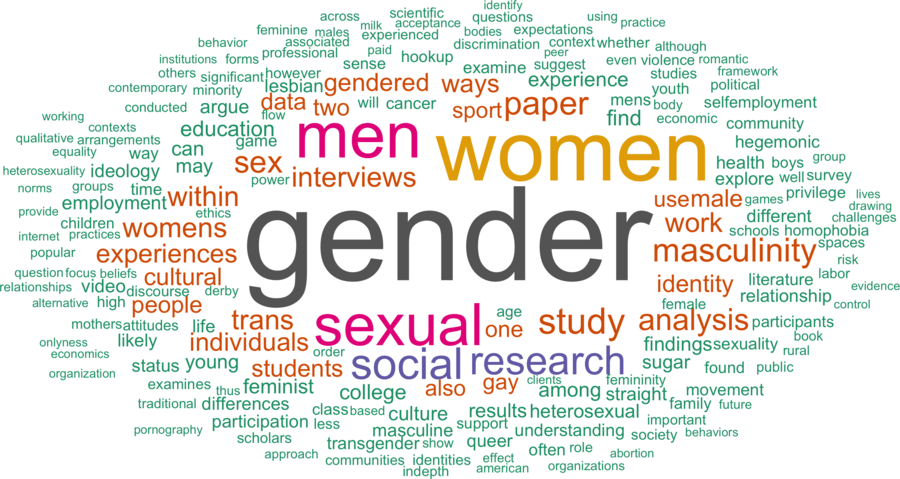Sociological Debate on Power and Empowerment
Unit IV: Sociological Debate on Power and Empowerment 6 hrs
• Sociological understanding on 'power': Bourdieu, Foucault and Baudrillard
• Feminist understanding on power
• Gendered debate on power and empowerment
Required readings
Geèienë, Ingrida (2002) "The notion of power in the theories of Bourdieu, Foucault and
Baudrillard," Sociologija, vol. 2, pp. 116-124.
Allen, Amy (2014) "Feminist perspectives on power," The Stanford Encyclopedia of Philosophy
(Summer 2014 Edition), Edward N. Zalta (ed.), URL =
<http://plato.stanford.edu/archives/sum2014/entries/feminist-power/>.
Batliwala, Srilatha (2007) "Taking the power out of empowerment - an experiential account,"
Development in Practice, vol. 17(4), pp. 557-565.
March, Candida, Ines Smyth and Maietrayee Mukhapadhyah (1999) "Women's empowerment
(Longwe) framework," in A Guide to Gender Analysis Framework, Oxford: Oxfam GB, pp.
92-100.
Unit V: Feminist Methodology 8 hrs
• Feminist critique of positivism and the value for reflexivity and social change
• Emerging approaches in feminism-sensitive research
• Double consciousness and feminist standpoint epistemology
Required readings
Naples, Nancy A. (2007) "Feminist methodology." Blackwell Encyclopedia of Sociology. Ritzer,
George (ed). Blackwell Publishing, Blackwell Reference Online, 1 September 2010,
available at:
http://www.blackwellreference.com/subscriber/tocnode?id=g9781405124331_chunk_g978
140512433112_ss1-42, last retrieved on 20 June 2015.
Wambui, Jane (2013) An introduction to feminist research, available online at
http://www.researchgate.net/publictopics.PublicPostFileLoader.html?id=54946308d5a3f2e
0038b4698&key=fb9f096d-d0bd-4e24-87b5-61520a3ed3c0.
Harding, Sandra (1993) "Rethinking standpoint epistemology: what is 'strong objectivity'? in
Linda Alcoff, Elizabeth Potter (eds.) Feminist Epistemologies, Routledge, pp. 49-82.
Brooks, Abigail (2007) "Feminist standpoint epistemology: building knowledge and
empowerment through women's lived experience," in Sharlene Nagy Hesse-Biber &
Patricia Lina Leavy (eds.) Feminist Research Practice, Chapter 3, Thousand Oaks, CA:
Sage Publications, pp. 53-82.
Unit IV: Sociological Debate on Power and Empowerment 6 hrs
• Sociological understanding on 'power': Bourdieu, Foucault and Baudrillard
• Feminist understanding on power
• Gendered debate on power and empowerment
Required readings
Geèienë, Ingrida (2002) "The notion of power in the theories of Bourdieu, Foucault and
Baudrillard," Sociologija, vol. 2, pp. 116-124.
Allen, Amy (2014) "Feminist perspectives on power," The Stanford Encyclopedia of Philosophy
(Summer 2014 Edition), Edward N. Zalta (ed.), URL =
<http://plato.stanford.edu/archives/sum2014/entries/feminist-power/>.
Batliwala, Srilatha (2007) "Taking the power out of empowerment - an experiential account,"
Development in Practice, vol. 17(4), pp. 557-565.
March, Candida, Ines Smyth and Maietrayee Mukhapadhyah (1999) "Women's empowerment
(Longwe) framework," in A Guide to Gender Analysis Framework, Oxford: Oxfam GB, pp.
92-100.
Unit V: Feminist Methodology 8 hrs
• Feminist critique of positivism and the value for reflexivity and social change
• Emerging approaches in feminism-sensitive research
• Double consciousness and feminist standpoint epistemology
Required readings
Naples, Nancy A. (2007) "Feminist methodology." Blackwell Encyclopedia of Sociology. Ritzer,
George (ed). Blackwell Publishing, Blackwell Reference Online, 1 September 2010,
available at:
http://www.blackwellreference.com/subscriber/tocnode?id=g9781405124331_chunk_g978
140512433112_ss1-42, last retrieved on 20 June 2015.
Wambui, Jane (2013) An introduction to feminist research, available online at
http://www.researchgate.net/publictopics.PublicPostFileLoader.html?id=54946308d5a3f2e
0038b4698&key=fb9f096d-d0bd-4e24-87b5-61520a3ed3c0.
Harding, Sandra (1993) "Rethinking standpoint epistemology: what is 'strong objectivity'? in
Linda Alcoff, Elizabeth Potter (eds.) Feminist Epistemologies, Routledge, pp. 49-82.
Brooks, Abigail (2007) "Feminist standpoint epistemology: building knowledge and
empowerment through women's lived experience," in Sharlene Nagy Hesse-Biber &
Patricia Lina Leavy (eds.) Feminist Research Practice, Chapter 3, Thousand Oaks, CA:
Sage Publications, pp. 53-82.
### Unit IV: **Sociological Debate on Power and Empowerment**
This unit delves into various theoretical frameworks of power, focusing on sociological perspectives from scholars like Bourdieu, Foucault, and Baudrillard, and feminist understandings of power and empowerment.
#### 1. **Sociological Understanding of Power: Bourdieu, Foucault, and Baudrillard**
- **Pierre Bourdieu** emphasizes power as tied to symbolic systems, social capital, and cultural capital. He argues that power is maintained through the reproduction of social structures, where dominant groups control symbolic power, which influences people's perceptions and behaviors.
- **Michel Foucault** views power not as a possession but as something that circulates through discourse and institutions. His concept of **biopower** explores how modern states regulate bodies and populations through various institutions. Foucault's idea of power being productive (not just repressive) is central to understanding how power functions in everyday life.
- **Jean Baudrillard** focuses on the idea that in postmodern societies, power is tied to simulation and media. Power becomes an illusion, sustained by media and signs rather than direct force or authority. Baudrillard argues that power operates through hyperreality, where images and symbols dominate, creating a system where the boundary between reality and simulation becomes blurred.
- **Required Reading**: Gečienė (2002) explores these three theorists' views on power, offering a comparative analysis of their distinct but interrelated approaches to understanding power in modern society.
#### 2. **Feminist Understanding of Power**
- Feminist theories offer a critical lens on how power operates along gender lines. **Amy Allen** (2014) outlines feminist critiques of traditional conceptions of power, highlighting how patriarchy, institutions, and social norms work to maintain women's subordination.
- Feminist perspectives shift the focus from power as domination to power as empowerment, emphasizing how marginalized groups can reclaim agency and challenge oppressive systems. They stress the need for recognizing the intersection of power with other social factors like race, class, and sexuality.
- **Srilatha Batliwala** (2007) critiques the use of "empowerment" in development discourse, arguing that it has been depoliticized and stripped of its radical potential. Empowerment should not just be about giving individuals more choices but transforming power relations that perpetuate inequality.
#### 3. **Gendered Debate on Power and Empowerment**
- The **Longwe Framework for Women’s Empowerment** (March, Smyth, and Mukhopadhyay, 1999) highlights the importance of analyzing power through a gendered lens. This framework views empowerment as a process where women move from being passive recipients of development aid to active participants with control over their lives.
- This debate engages with how empowerment can be understood not just as a top-down process but as one that requires addressing structural inequalities that reinforce women's subordination.
---
### Unit V: **Feminist Methodology**
This unit critiques traditional research methods, particularly positivism, and argues for approaches that are more sensitive to women’s experiences and committed to social change.
#### 1. **Feminist Critique of Positivism and the Value of Reflexivity and Social Change**
- Feminist scholars critique **positivism**, the traditional scientific method that seeks objectivity and detachment. They argue that positivist approaches ignore the ways in which the researcher’s identity, position, and perspective shape the research process.
- **Reflexivity** is the practice of reflecting on how one's own social location, assumptions, and biases influence the research. Feminist researchers stress that the goal of research should be not only to understand the world but to change it, making a commitment to social justice central to feminist methodology.
#### 2. **Emerging Approaches in Feminism-Sensitive Research**
- These approaches involve methods that center women's experiences, particularly those of marginalized groups. Feminist researchers often use qualitative methods, such as interviews and ethnography, to capture the complexity of women’s lived experiences. They also emphasize collaboration with research participants, making them co-creators of knowledge rather than subjects.
- **Nancy Naples** (2007) explains that feminist methodology challenges hierarchies between researcher and participant, promotes empathy, and calls for research that leads to transformative social change.
#### 3. **Double Consciousness and Feminist Standpoint Epistemology**
- **Double consciousness**, a concept from W.E.B. Du Bois, refers to the experience of marginalized groups, particularly Black individuals, who must navigate dominant cultural norms while maintaining their own identity. In a feminist context, this idea is expanded to describe how women experience society differently based on their gender, race, class, and sexuality.
- **Feminist standpoint epistemology** argues that marginalized groups, especially women, have a unique standpoint that allows them to see social realities more clearly. **Sandra Harding** (1993) suggests that this "strong objectivity" is a more valid form of knowledge production than traditional objectivity because it acknowledges the role of social location in shaping understanding.
- **Abigail Brooks** (2007) builds on this by explaining how women's lived experiences are a valuable source of knowledge. She stresses the importance of building empowerment through research that is rooted in women's real-life experiences.
---
### Key Takeaways:
- **Unit IV: Power and Empowerment** explores how power is understood and contested in sociological and feminist theory, linking it to broader questions of agency, domination, and social change. Feminist perspectives on power critically engage with how power structures maintain gender inequality and how empowerment can be more than a superficial process.
- **Unit V: Feminist Methodology** challenges traditional positivist methods, emphasizing the importance of reflexivity, feminist epistemology, and methods that prioritize social justice. Feminist research aims to not only understand the world but to change it, making women’s experiences central to knowledge production.
These units equip you with the theoretical and methodological tools to critically analyze power and gender in both academic and practical contexts.








